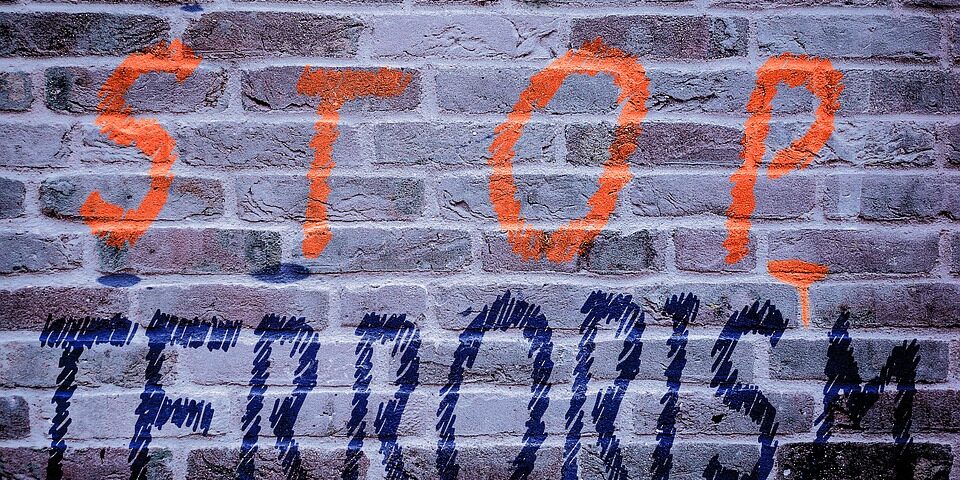
Corporations, prisons and global perspectives
May 27, 2025
Freedom
May 28, 2025What is terrorism?
The response to the 9/11 attacks seems in many ways to be unproblematic. It almost seems common sense that the attacks should be seen as terrorism and that it was appropriate to declare war on an enemy who had committed acts of large-scale violence against the USA.
Yet if we take a step back, we can see that George W. Bush had to gain mainstream acceptance for framing what happened on 9/11 as an act to which an appropriate response was the declaration of war. Gaining acceptance for ideas often involves promoting a particular discourse – that is a way of talking about a particular issue which in turn encourages particular ways of thinking about the issue and ultimately therefore justifies certain responses.
In this case, George W. Bush had to establish two things:
- Firstly, he had to establish that 9/11 constituted acts of terrorism.
- Secondly, he had to establish that the acts were not like typical crimes. Therefore they should be dealt with differently, as political acts rather than simply as lawbreaking.
With respect to the first issue – what is defined as terrorism – there is a well-known adage that ‘one person’s freedom fighter is another person’s terrorist’. This highlights the difficulty over deciding whether an act should be regarded as terrorism or not. Often this depends on whether there is seen to be a legitimate reason for specific acts of violence, which is, in itself, depends on a person’s perspective.
With regards to the second issue – whether terrorism is seen as crime or as a political act, there is also room for different interpretations (or discourses). While the result of an act of terrorism may be seen as being similar to other crimes such as murder, the motivation involved in terrorism is seen as fundamentally different. Under UK law, for example, the clear differentiation is made that terrorism has the intention to influence or intimidate in the pursuit of a political, religious or ideological goal.
Two discourses of terrorism
Given the way that George W Bush framed the 9/11 attacks, it may be surprising to see that the former British Prime Minister, Margaret Thatcher used a very different discourse to frame the issue of terrorism. For example, in a speech in 1981, UK Prime Minister Margaret Thatcher made clear her views on terrorism clear saying:
There is no such thing as political bombing or political violence. We will not compromise on this. There will be no political status. Crime is crime is crime. It is not political. It is crime and there can be no question of granting political status.
(Thatcher, 1981)
This speech was in response to a series of widely publicised hunger strikes by Irish Republicans in The Maze and Long Kesh prison in Northern Ireland who were seeking to be recognised as political prisoners rather than ordinary criminals.

You can contrast this with President George W. Bush’s statement that ‘Al-Qaeda is to terror what the mafia is to crime’ (2001) in discussing the US response to the terrorist attacks of 11 September 2001. In so doing, he implied that terror and crime were fundamentally distinct.
The language used by both Thatcher and Bush can, respectively, be used to legitimate and justify particular responses. By defining the actions of both Republicans and Loyalists in Northern Ireland as purely criminal, Thatcher denied the motivations or claims behind them any political authority. The British Government also implicitly reinforced the criminal justice system as the mechanism for responding to these actors’ actions, rather than having to engage in political negotiations with them, employing a strategy of criminalisation to respond to political violence in Northern Ireland from 1972 to 1981. This approach included an expansion of counter-terrorism laws – leading to widespread arrests, detention without trial and the use of harsh interrogation techniques (McEvoy, 2001). Since different discourses can justify different actions by the state they can be seen as significant in the way that power is exercised, particularly over relatively powerless groups.
As you will see, discourses of terrorism can be used to legitimate the deployment of extra security measures or even military force against relatively powerless social groups (such as Republicans in Ireland in the 1980s and Muslim populations in various parts of the world today) and in the process contributing to maintaining or increasing inequality.
The ‘War on Terror’
On Tuesday 11 September 2001, almost 3,000 people were killed in the USA when four domestic passenger planes were hijacked and crashed in a coordinated attack. Many more were injured and suffered health-related illnesses (including premature death) following the events of what would come to be known as 9/11 (see The Guardian, 2016).
The attacks were quickly identified by the U.S. Government as an act of terrorism with responsibility attributed to an international militant Islamist group called Al Qaeda. Nine days later, the then President of the United States, George W. Bush, announced that the U.S. was embarking upon a ‘War on Terror’, in response to the attacks.
Since 9/11, the term ‘War on Terror’ was brought into being in western media and political discussion. The ‘terror’ referred to in the phrase ‘War on Terror’ has been used particularly in relation to terrorist events attributed to Islamist groups.
These include attacks including the bombings of 2004 in Madrid and 2007 in London (‘07/07’), as well as attacks in France, Belgium, Libya, Lebanon, Indonesia, Australia, Pakistan, Turkey, and the UK, and also the 1993
World Trade Center bombing occurring 8 years before 9/11. On the other hand, ‘terror’ coming from other sources, such as right-wing political groups and individuals in the USA and elsewhere, is not generally seen as being part of the same issue or subject to the same ‘war’. The ‘war’ itself refers to western-led military intervention overseas, including in Syria, Afghanistan and Iraq as well as domestic security measures
Social harm and the ‘War on Terror’
Throughout this course so far, you have encountered the concept of social harm and some of the arguments that are made concerning the limits of criminology for understanding and responding to social harm.
This section explores further some of the criticisms that social harm theorists have made of criminology and criminal justice, highlighting issues of inequality, power and globalisation.
Using what has become known as the ‘War on Terror’ as a case study, you will explore how particular global events are constructed as issues of ‘crime’ and ‘security’ (and, conversely, which are not).
will explore this through public and media discourse about the ‘War on Terror’, and how this discourse has been used politically and strategically to justify military action and, as some analysts have argued, to demonise, exclude and control particular ‘problem populations’.
In particular, you will critically consider the implications of these measures and whether, ultimately, they do more harm than good.

Counting the costs of the ‘War on Terror’
From a social harm perspective, significant harms of the ‘War or Terror’ have arisen by justifying and legitimating a set of new policies and practices which in part flow from the way in which the issue has been framed. The discourse of ‘security’ has been particularly prevalent. While ‘security’ is emphasised on the one hand as being for protective purposes, it has also been associated in relation to the ‘War on Terror’ with increasingly restrictive and repressive policies.
This discourse on security and resultant policies and practices is of interest to zemiologists since, in Western states, most of the media have focused largely on the harms arising from actions associated with ‘Islamist terror’, but have given little consideration to harms resulting from new security policies. For example, from a social harm perspective, the loss of freedoms that these ‘security’ responses have brought about could be seen as producing social, political harms, and even physical harms. It is notable that the harms that the security policy brings are not borne equally by every section of the population.
While terrorism itself of course causes great harm, responses to terrorism can also cause great harm and potentially they may even be more harmful than the phenomenon they are supposed to be addressing. By applying a social harm approach to the case study of the ‘War on Terror’ and the policies and responses to which it gives rise, you can explore further some of the claims that social harm theorists have made, specifically:
- That the criminalisation and punishment of marginalised and relatively powerless groups who are often seen as being associated with terrorism because of their ethnicity, inflicts further harm on these groups and increases inequality.
- That the discourse of terrorism gives legitimacy to the expansion of crime control and other security measures.
- That the framing of issues as ‘crime’ or ‘terrorism’ serves to maintain power relations.
In the following sections you will consider the harms that have arguably resulted from the ‘War on Terror’ and consider the question of whether the measures intended to protect people from harm can themselves create further harms.
A range of recent scholarship and media analysis has sought to measure the harms of the ‘War on Terror’, and it has attempted to compare the immediate costs of the 9/11 terrorist attacks with those of the military action that emerged in response to them. For example, whilst just under 3,000 people lost their lives in the United States in the events of September 11 2001 (Malley and Finer, 2018), the estimates discussed below suggest that this number was far exceeded by the civilian casualties which resulted from U.S.-led military intervention in Iraq and Afghanistan, launched as part of the ‘War on Terror’.
Mortality data is highly contested in conflict contexts. It is notable also that the U.S. government does not keep official data on civilian deaths resulting from the U.S. led War on Terror. Some unofficial reports however, estimate up to 31,419 civilian deaths in Afghanistan as a direct result of the military action between October 2001 and July 2016 (Watson Institute for International and Public Affairs, 2016).
In Iraq, the NGO Iraq Body Count project recorded between 180,093 and 201,873 civilian deaths from violence since the invasion of Iraq in 2003 and February 2017 (Iraq Body Count, 2018). Some of the wider harms of the ‘War on Terror’ in Iraq are also revealed in a 2013 public health study (Hagopian et al., 2013).

